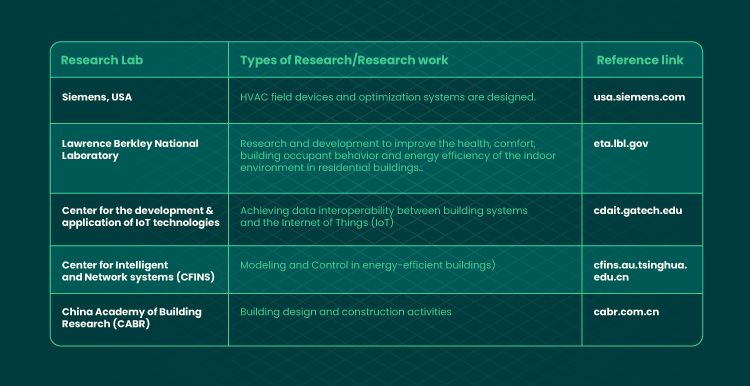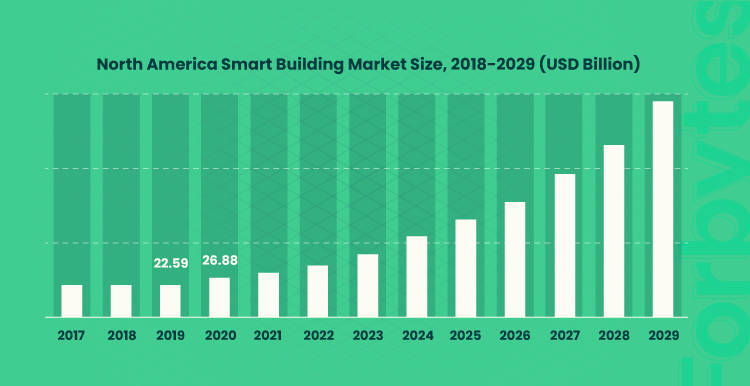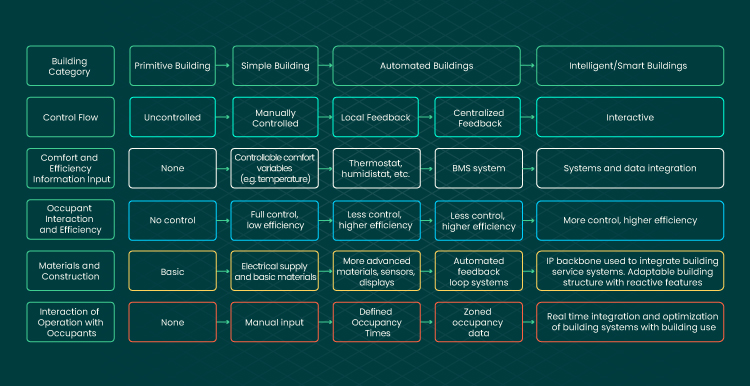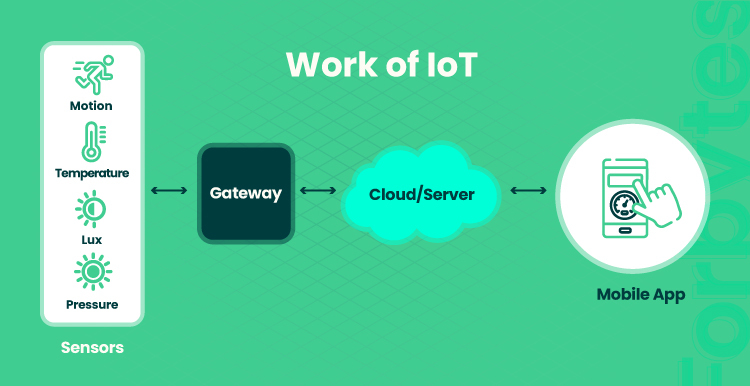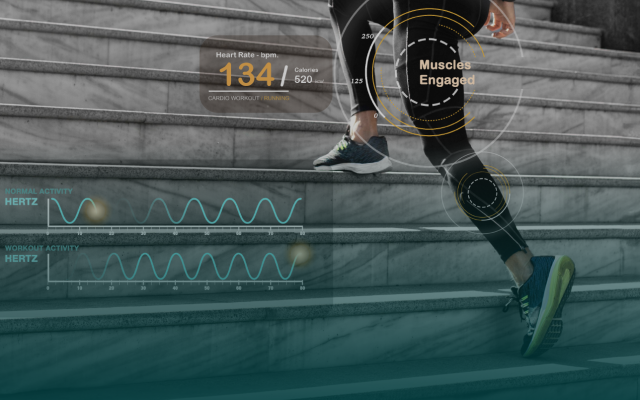By 2050, 70% of the world’s population will live in urban areas. People will strive to get the most out of the highly-technological world. They will move to the cities and towns to enjoy all the benefits of civilization. And if you think that these benefits are limited to high-speed Internet and product availability, you should keep reading.
This time, we’ll investigate an interesting notion of smart buildings. Stay with us to grasp all the prospects and risks of smart building technologies and dive into examples of how they work today.
Smart Building Technology Prospects
With the rise of urbanization trends, governments are concerned with city life optimization. They put maximum effort to prepare urban areas for the growing human traffic. This translates into the development of advanced infrastructure. The goal of advanced technological projects is to increase comfort. They also can optimize the time people spent doing repetitive tasks. For example, staying in traffic jams, managing building systems, running errands in malls, and so on.
Many people believe that intelligent buildings are a matter of the future and we shouldn’t care. But reality shows the opposite. Let me explain this by giving you a few real-time examples.
Singapore: The Singapore authorities launched an initiative called Smart Nation. As a part of this initiative, the government developed the so-called Green Mark Scheme. One of the scheme’s goals is to make 80% of the city buildings green and environmentally friendly. This will be achieved by optimizing the energy system and increasing building efficiency.
Aragon: Similarly, Aragon started its journey to smart infrastructure in 2019. Their government decided to achieve a 20% decline in energy usage by developing Smart City Zaragoza. The results exceeded their expectations. The smart city concept helped Aragon achieve a 30% drop in energy consumption.
So, smart buildings are a prospective notion that starts growing today. It offers vast opportunities for a building manager. As a rule, they want to optimize building management, go green, and reduce expenses. It also can be interesting to facility managers who look for ways to impress their clients or building occupants. Lastly, property developers will also be interested in smart building technology. It’s a way to stand out from the competition and add a differentiating feature to their services.
Moreover, the number of studies on building technology solutions has also grown. This creates more convincing reasoning for smart world implementation.
What Is Smart Building?
A small example of smart building solutions is a home alarm system. It notifies a resident via a phone call or app if there’s suspicious activity detected. Add a few things to this picture. A smart fridge that manages your supply. A robot vacuum cleaner that does regular cleaning. A tablet that allows for heating and lighting control. And you’ll get a smart building where you control all aspects with integrated technology.
So, smart buildings are buildings that can be managed via a set of digital technologies. These digital transformation technologies combine hardware and software. This ensures system connectivity and integrity. Smart buildings technology allows people to manage processes with a convenient UI. The processes usually fall into categories like air conditioning, heating, lighting, ventilation, etc.
In 2021, the smart building market was valued at more than $60 billion. In 2022, it will reach $80 billion and rise to $330 billion in 2029. The forecasts for this market are very optimistic. More and more smart projects are created, and 5G is spreading. Technologists expect the market to have a CAGR of 22% or more.
The goal of smart buildings is to utilize technology to make people’s residence in a building as convenient as possible. Smart building system collects data from devices in real-time and shares it with people via software. Users, in turn, access meaningful information and can influence it in many ways. They can change, regulate, optimize, manage their stay in a building or control the building maintenance. This is how the smart building concept evolved from the primitive model:
Smart Building Concept: Main Classifications
When we talk about smart building technology, we can differentiate between the two main components of this market. This includes:
- Smart building solutions. These are the specific solutions that fall into the smart building system. For instance, AI-powered energy management solutions, security management apps, etc.
- Smart building services. This aspect relates to the actual implementation of smart solutions in buildings. Smart building services may be different. They can include consulting services, agile full-cycle product development, integration of ready-made software into a building, etc.
Smart building solutions can be focused on the following areas:
- Infrastructure management. Managing infrastructure is subdivided into elevators & escalators, parking, smart water management, and more.
- Security management. This includes the development of access control software and hardware, safety management solutions, video surveillance systems, etc.
- Resource management. The implementation of energy management solutions grows rapidly because of environmental reasons. The aspect includes lighting, heating, water supply, and all components included in HVAC systems.
Also, we may classify smart building systems based on their application.
- Residential smart technology. It’s applied to the residential type of buildings. The main reason for residential sector growth is the rising need for safety and resident comfort. Another benefit of the residential application is smart maintenance that increases efficiency.
- Commercial smart technology. This will be a dominant sector of the smart building market. Commercial application is implemented by a commercial building owner. Their goal is to get significant cost savings in the long run.
- Industrial smart technology. This includes software and hardware for measuring pollution, electric meters, or routers. In other words, it’s the application of smart technologies in the industrial sphere, manufacturing, and professional service sectors.
4 Components of Smart Building Technology
Smart building technology consists of 4 components:
1. IoT
IoT stands for Internet of Things. It has a lot to do with the smart world concept. To be more precise, it forms the ground for a smart building to exist. IoT is a network of physical devices that are connected via the Internet. No matter if these devices work with wireless technologies or wired ones. Their goal is to connect with other devices, actuators, as well as sensors via APIs and comprise a system. In such a system, the information from one device is automatically shared with the rest of the devices. It’s updated in real-time across the software network. IoT sensors and devices collect data such as air quality metrics, number of visitors, number of cars in parking, etc.
2. Connectivity
This is what allows for data exchange in real time. As you may guess, cross-device communication is possible due to the Internet. It serves as a connector of all smart building components. We may use both WiFi and cellular connections for this purpose.
3. AI solution
AI is like the brain of a smart building. Thanks to AI algorithms, people see not the machine code on their screen — but the interpreted results of data processing. The function of AI technology is to analyze the data collected from IoT devices and sensors and interpret it. IoT devices collect big volumes of structured and unstructured data. The goal of AI is to extract value from this data before humans access it. This is artificial intelligence that notifies us if the temperature or air humidity in a room is too high. It’s also AI that reminds us of scheduled repairs or upcoming maintenance and informs us if there’s no free parking place.
4. Center of control
The center of control is responsible for data monitoring. This is an integrated and connected software system with a clear User Interface. A control center allows people to manage and control data in a centralized hub. Usually, a PC or a mobile phone is used to access systems and keep track of what’s happening inside a building.
Are There Some Other Technologies Included?
The answer is yes. Apart from the main components, smart building apps may be integrated with the following technology.
Management and automation systems
These are systems like BIM (building information modeling), BMS (building management system), or BAS (building automation system). The goal of such systems is to unite the work of machines and humans and facilitate or automate building management. Information lies at the core of building automation systems. Management and automation systems ease the interaction between technology and people. They make it super convenient for the former to keep track of all processes.
VR/AR
Many people think of AR and VR as the technology applied in gaming. But this is not the only application possible. AR and VR can be used for more practical purposes. For example, designers use AR technology to model the room design before it undergoes refurbishing. A resident puts AR glasses on and can choose between different remodeling and reconstruction options. Also, this technology is used in smart buildings to visualize what a house will look like when it’s constructed. Such a visualization helps property sales managers encourage clients to purchase the property. They also can adjust the spaces to client needs.
Drones
As in the case of VR/AR, drones are used not only for entertainment purposes. We all know that drones are the perfect tools for making panoramic shots and videos. But in practice, drones can assist in smart building management as well. Drones can take responsibility for the effort-consuming jobs and free time for more important tasks. For example, they are used for monitoring the construction progress, product availability, security control, etc. If the areas are not freely accessible to humans, they can delegate their jobs to a machine and enable remote control.
Smart Building Technology Benefits
- Integrity. All tech components of a smart building are integrated. This allows humans to access building data in real time, which was collected by the technology across all channels. You also can check data records of what happened some time ago. AI processes these data and involves machine learning to find the best ways for optimization and energy efficiency.
- Centralization. You manage the entire system from one control center. Doors, windows, appliances, irrigation, blinds, and other smart building components are managed under one roof. It enables residents and property owners to react properly to vulnerabilities or alerts. They save time and effort while managing their property in a centralized hub.
- Comfort. Data collected by smart building technology gives you more control over the processes that happen in your spaces. No matter if you are present in the house or not, you can configure metrics and set up a comfortable environment and healthy conditions for habitability.
- Security. With a smart building solution, you control access to the system. Advanced security measures and authentication devices give you maximum control over your house and protect it from third-party entrance.
- Sustainability. Preventing ineffective use of resources increases sustainability. You not only increase energy savings but also help save the environment. If you add occupancy IoT sensors to heating systems, you can optimize resource consumption and be more sustainable. Self-regulatory lighting systems can also adjust to natural light conditions and apply the needed intensity reasonably.
- Optimization. You can cut maintenance and energy costs by optimizing your heating, water, and lighting expenses. Suppose that you want to turn off the heating once the temperature reaches 20 degrees. You go to bed and you don’t want to get up in the middle of the night to do it manually. With smart house technology, you can set the timer for heating or set the command that turns the heating off once the needed temperature is reached. This reduces your heating expenses and prevents the core systems’ breakdown. Besides, smart technology allows for space optimization. This plays a big role in commercial buildings and industrial use cases.
- Predictivity. AI-powered algorithms have the self-learning ability. This enables the technology to learn from historical data and provide you with insightful analytics. For example, AI can suggest when it’s the best time to conduct a technology checkup or develop a maintenance job schedule for you.
- Automation. Instead of configuring each device separately, you can access and control the system via your smartphone or PC. You can automate such processes as turning the light on/off, ventilating the room, getting notified when your food supplies are almost over, etc.
- Risk prevention. If the technology detects patterns of abnormal use of assets, it notifies you. This prevents risks associated with this type of breakdown or fault. Keeping your space clean, restocking goods timely, maintaining equipment and hardware in good condition, and more is possible with SB.
Smart Building Technology Challenges
When dealing with a smart building app or solution, you need to build a robust risk management plan. It should consider the following aspects:
- Cyber-attacks. In the smart building concept, intelligent technology is connected to each device and each piece of software. The sensitive information is shared across channels. This increases the risks of a data breach if a penetrator manages to hack the technology. Do not neglect the essential security measures to protect your data and your software.
- Costs. Sure, the building of smart houses is far more costly than conventional ones. But the future belongs to those who use technology to increase convenience and efficiency. Smart building technology is what can help you reach these goals and simplify building management. The smart house market is growing steadily. And sooner or later, property owners and managers will have to adjust to the rising resident demands and modernize building operations.
Smart Building Use Cases
Here are the most common smart building applications.
Offices
Offices are the places where a large number of people operate daily. Inefficient use of resources by dozens of employees has a significant impact on the vendor’s budget. It also blocks the company’s prospects for sustainable growth. This is why offices are the most common use case of smart building solutions. The intelligent building systems are connected with IoT sensors and software. Altogether, they enable companies to cut operation costs, reduce waste, and manage spaces effectively. Here are some of the functions smart building companies ensure:
- Smart corporate-level management.
- Parking space management.
- Employee authorization management.
- Optimization of lighting, heating, and water supply in crowded/empty areas.
- Adjusting air conditions to the season and employee preferences.
- Notification of leakage and security breach attempts, fire alarms.
- Video surveillance in public spaces, and more.
Example
The example of Edge building is inspiring. This case proves that smart building management is a real necessity today. Edge is one of the most technologically advanced spaces in the world. It’s the greenest office building in the world and has a BREEAM Sustainability Rating of 98.4%. Employee and corporate management are done with an AI-powered mobile app. When employees arrive at the parking, the technology conducts a verification by recognizing their license plate numbers.
Interestingly, there are more than 2500 workers operating in the office. Meantime there are less than 1250 desks available. Intelligent technology assigns desks or other work tools to each employee based on their preferences and daily schedule. AI-powered desk management allows for smart use of space and efficiency.
100% of the energy in the building comes from solar panels. Edge also uses the technology for collecting rainwater. The water is then used for slashing toilers and irrigating the green areas near the office. There are many other impressive features in this building. To get inspired, check this video:
Hospitals
Smart technology penetrates the healthcare industry. Modern hospitals implement AI-powered diagnostics, healthcare big data, and tech-based patient care practices. Building a smart hospital system can unify all these aspects and bring digital and physical ecosystems together. Smart technology helps with the following:
- Smart terminals. Smart technology can be an all-in-one solution for bedside communication in hospitals. The piece of software with an intuitive user interface is attached to the patient’s bed. Patients use it in many ways. They can manage their stay in a hospital, get in touch with staff, send alerts, use entertainment and educational resources, etc.
- Operation management. Sensors automate checking the conditions before surgery or other procedures. They also enable condition optimization.
- Chamber management for patients. They can use an app to manage facility conditions like air temperature, humidity, etc.
- Laboratory management. Sensors and devices control the air quality and other metrics to make sure that samples are stored appropriately. Also, there can be smart access management, which will contribute to robust security.
- Recovery enhancement. Smart devices and IoT sensors can be used to adjust the conditions according to the recovery goals. For instance, a patient had surgery and they are recommended to have a 5-minute walk daily. If sensors don’t detect movement throughout the day, the technology can remind patients of the therapeutic goals set.
Example
As Siemens company puts it, the biggest tool in a building has to be the building itself. Based on this principle, the company built smart technology solutions for Sint-Maarten Hospital. Intelligent technology makes this place a perfect space for patient healing. Patients get the tools to control functions and conditions in their rooms. Cloud-based energy platforms allow for higher efficiency and intelligent energy use. Moreover, the latest technologies facilitate patient-staff communication. You can see what it all looks like below:
Data Centers
Data centers equipped with the latest technology can transform data management. Smart building data centers enable intelligent data monitoring and visualization. You may integrate the following functions:
- Uninterrupted power supply, which does not depend on the general power grid and eliminates the risks of data damage or loss.
- Activation of protective measures. These can be smoke detector sensors and automated processes like risk management, ID verification, biometric authorization, etc.
Example
NxtGen high-density data center is an example of a highly advanced facility for data management and storage. Traditionally, data centers were capable of static data management. Smart building technology enables smart and dynamic data processing across integrated devices. Servers are adjustable to the power they need in real-time. NxtGen used the experience of 300 experts to build a facility able to handle modern-day computing infrastructure.
Life Science Facilities
Advanced inventions and discoveries require advanced research. Smart building technology can facilitate this process. It creates the best conditions for opening new things. This includes:
- Airflow management and control.
- Laboratory conditions management.
- Intellectual property protection.
- Fire detection.
- Security risk detection.
Example
Develco Pharma Schweiz AG is a leading manufacturer of pharmaceutical products. It uses smart technology to streamline operations and digitize data visualization.
Interested in Smart Building Concept?
This article comprises everything you should know about smart building technology. As you see, this concept is not a matter of tomorrow. It’s today’s reality for businesses and companies that integrate future-proof practices. Intelligent technology makes human life easier and more controllable.
If you got interested in the smart building concept or have questions, let us help you. Forbytes is a tech-savvy software engineering company that helps businesses across the globe modernize their operations and get the maximum benefit from digital solutions.

Our Engineers
Can Help
Are you ready to discover all benefits of running a business in the digital era?

Our Engineers
Can Help
Are you ready to discover all benefits of running a business in the digital era?


